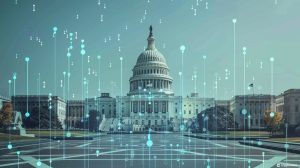In the field of artificial intelligence, self-supervised learning is emerging as a powerful method for enabling machines to learn from unlabeled data. This approach involves training algorithms to predict missing parts of the input data, such as filling in the blank in a sentence or completing a partial image. By leveraging the structure and patterns in the data, self-supervised learning allows machines to autonomously learn representations of the world without the need for human-labeled examples. This has numerous benefits, including the ability to learn from vast amounts of readily available data without the time-consuming and expensive process of manual labeling.
One key advantage of self-supervised learning is its scalability. By training algorithms on large amounts of unlabeled data, models can learn general representations of the world that can be applied to a wide range of tasks. This can be particularly useful in domains where labeled data is scarce or costly to obtain. Additionally, self-supervised learning has shown promising results in domains such as natural language processing, computer vision, and robotics, where the ability to learn from unannotated data can significantly advance the state of the art.
Another benefit of self-supervised learning is its ability to learn diverse and nuanced representations of data. By training models to predict different aspects of the input data, algorithms can uncover underlying structures and relationships that may not be apparent in labeled data. This can lead to more robust and interpretable models that can generalize well to new and unseen tasks. Additionally, self-supervised learning allows for continual learning, as models can continuously improve their representations by iteratively training on new data without the need for human intervention.
One of the challenges of self-supervised learning is designing effective pretext tasks. These tasks should be sufficiently complex to encourage the model to learn meaningful representations of the data, while also being computationally tractable. Researchers have explored a variety of pretext tasks, such as predicting missing words in a sentence, completing jigsaw puzzles, or predicting the next frame in a video sequence. By choosing appropriate pretext tasks that capture the underlying structure of the data, models can learn rich and informative representations that can be transferred to downstream tasks.
In addition to pretext tasks, the choice of architecture and training strategy can also impact the performance of self-supervised learning models. Researchers have explored techniques such as contrastive learning, generative adversarial networks, and self-supervised attention mechanisms to improve the quality of learned representations. By leveraging these advanced techniques, models can learn more robust and semantically meaningful representations that can generalize well to a variety of tasks.
Overall, self-supervised learning has the potential to revolutionize the field of artificial intelligence by enabling machines to autonomously learn from vast amounts of unlabeled data. By leveraging the structure and patterns in the data, self-supervised learning allows for scalable, diverse, and interpretable representations that can be transferred to a wide range of tasks. With ongoing research and development in this area, self-supervised learning may play a key role in advancing the capabilities of artificial intelligence systems in the future.















